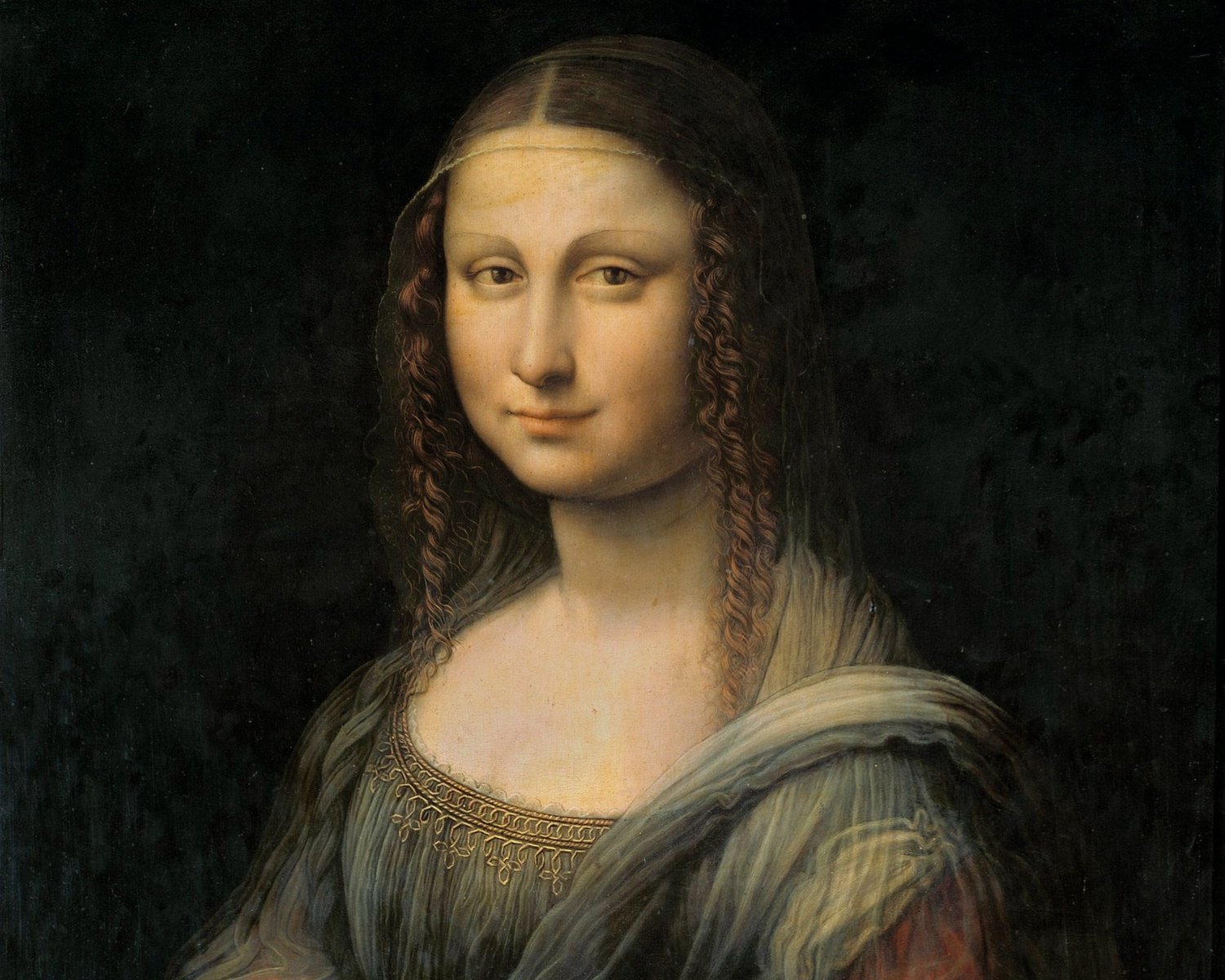Copies of the Mona Lisa
MUSEO DEL PRADO, MADRID 28 SEPT 2021 - 23 JAN 2022
The Prado panel pre-restoration
It may come as a surprise that the Mona Lisa at the Musée du Louvre - the best known, most visited, and probably most photographed painting in the world - is only one of several versions painted in Leonardo da Vinci’s workshop around the same time. Don’t worry! The version in the Louvre is almost certainly by Leonardo himself: although it isn't signed, Leonardo's authorship is confirmed by contemporary accounts which say that he painted it around 1503 and left it when he died to his favourite assistant, Salai (1480-1524).
One of the versions which survives today is at the Museo del Prado in Madrid, having been in the Spanish royal collection since 1666. Until recently, the figure appeared against a black background and the painting was seen as just another copy of the Mona Lisa. Then, about 10 years ago the Prado’s Conservation Department did a technical study of the painting, taking infrared reflectograms (IRRs) of it and of its copy of Leonardo’s Saint Anne, the Virgin and the Christ Child. They discovered that underneath the black paint of their Mona Lisa was a landscape and drawing so close to the one underneath the surface of the Louvre painting that it must have been copied by means of a pounced drawing or tracing from the original work.
Looking at the Prado version with the naked eye, it is very close to Leonardo's painting in Paris, although less skilfully painted. But by comparing the IRR with that of the Louvre panel, we can see small pentimenti (changes made by the artist) beneath the painted surface which are identical in both works. It also shows corrections and marks which do not appear in the original, for example around the figure’s hands. This confirms that Leonardo was producing the painting now in the Louvre alongside an assistant, enabling this person to copy his creation onto another panel as he worked out the final composition.
The Prado’s technical study also revealed that the panel is painted on walnut rather than poplar like the Louvre painting and other larger, finished works by Leonardo. It is known that walnut was used in his studio for small, preparatory works. The walnut panel is likely to have been painted by Salaì (Gian Giacomo Caprotti da Oreno, 1480-1524), who entered Leonardo’s household at the age of ten and was his assistant until 1518; or Francesco da Melzi (1493-1572/3), a young nobleman who became Leonardo’s pupil in about 1505 and stayed with him until his death in France in 1519.
Francesco Melzi, Flora, ca. 1520, oil on panel transferred to canvas, 76 x 63 cm, Hermitage Museum, Saint Petersburg.
The Prado exhibition, curated by Ana González Mozo from the museum’s Conservation Department, presents some of the research which has led to these conclusions. It is the first to look at Leonardo as a teacher, and the training process “which focused on the observation and understanding of the effects of light and colour that he made such efforts to reproduce.” The exhibition also sets out to raise wider questions, about how important the concept of an ' original' version was for Renaissance artists, and about the function and types of copies derived from these ‘originals’. It furthermore confirms that both the Prado Saint Anne and another one now in the Hammer Museum in Los Angeles were almost certainly made in the same way with expensive materials such as lapis lazuli used in the process. More controversially, the exhibition catalogue places two other small paintings on walnut panels - the Salvator Mundi which recently sold at Christie’s for $450 million, and so-called Ganay version of the same subject (private collection) - in the same category of workshop copies.
Workshop of Leonardo, Sainte Anne, the Virgin and Christ Child, ca. 1508-1513, Armand Hammer Museum of Art, Los Angeles.
Workshop of Leonardo, Salvator Mundi, ca. 1503, oil on walnut panel, 68.6 x 48.9 cm, Museo Diocesano, Naples.
Leonardo da Vinci (alone) or Leonardo with workshop participation, Salvator Mundi, ca. 1499–1510, oil on walnut panel, 45.4 cm x 65.6 cm, private collection.
(Written by Dr Nicola Jennings on behalf of Athena Art Foundation, November 2021)




